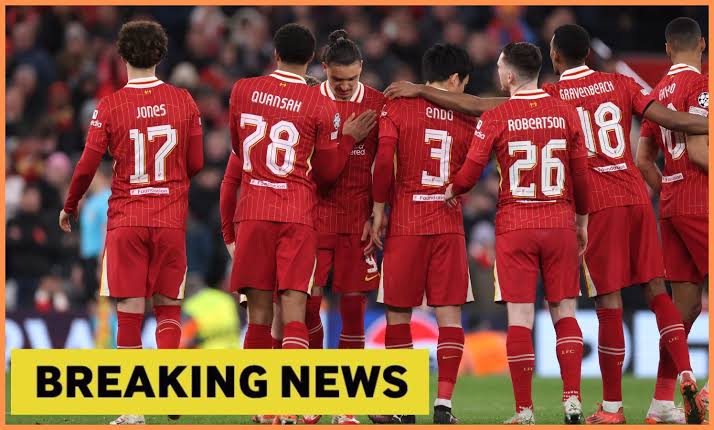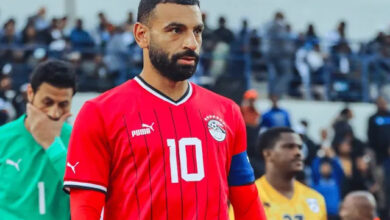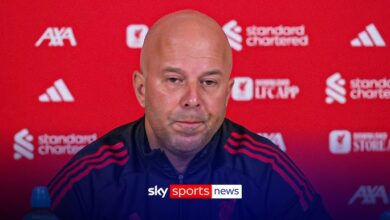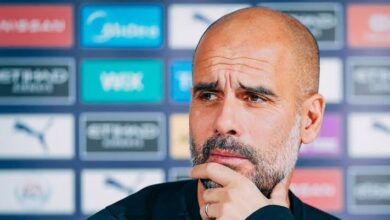Luis Díaz’s Journey: From Liverpool Star to Bayern Munich Bound

In a move that has sent ripples through the football world, Liverpool Football Club has agreed to part ways with one of their most electrifying talents. Luis Díaz, the Colombian winger who has dazzled fans at Anfield with his pace, skill, and infectious smile, is set to embark on a new chapter in his career with German giants Bayern Munich. The transfer, valued at approximately $88 million (£66 million), represents one of the most significant player movements of the summer transfer window and marks the end of what has been a remarkable, albeit relatively brief, tenure on Merseyside.
The 28-year-old attacker, who has become synonymous with Liverpool’s attacking prowess over recent seasons, found himself in the final two years of his contract with the Reds. This contractual situation, combined with various behind-the-scenes developments, ultimately paved the way for his departure to the Allianz Arena. The agreement between Liverpool and Bayern Munich came after extensive negotiations, with both clubs working diligently to structure a deal that would satisfy all parties involved.
Behind the scenes at Liverpool, the club’s hierarchy had been working tirelessly to secure Díaz’s long-term future at Anfield. According to sources close to the negotiations, Liverpool made not one, but two separate attempts to tie down the Colombian international to a contract extension. These efforts, spearheaded by the club’s management team, were designed to reward Díaz for his outstanding contributions and ensure his continued presence in the famous red shirt.
However, despite Liverpool’s genuine desire to retain their star winger, both contract negotiations ultimately foundered on the rocks of financial disagreement. The gap between what Liverpool was prepared to offer and what Díaz and his representatives were demanding proved to be insurmountable. This disparity wasn’t merely about basic salary figures; it encompassed various aspects of modern football contracts, including performance bonuses, image rights, release clauses, and the overall length of the proposed deal.
The first attempt at contract renewal occurred earlier in the season, when Liverpool officials recognized the need to secure Díaz’s services for the long term. The club, aware of his growing reputation across Europe and his importance to their tactical setup, put forward what they considered to be a competitive package. However, Díaz’s camp felt that the offer didn’t adequately reflect his market value or his contributions to the team’s success.
The second attempt came later, with Liverpool improving their initial proposal in several key areas. The club demonstrated their commitment to retaining the winger by increasing both the financial terms and the contract length. Yet again, the negotiations stalled as both sides struggled to find common ground. The persistent gap between expectation and reality on both sides made it increasingly clear that a resolution would be difficult to achieve.
What makes Díaz’s departure particularly poignant is the timing and circumstances surrounding his decision. The Colombian’s first expression of a desire to leave Liverpool actually came during the previous summer transfer window, a revelation that caught many supporters off guard. At that time, despite having established himself as a key player in Jürgen Klopp’s system, Díaz privately communicated his wish to explore opportunities elsewhere.
This initial desire to move represented a significant moment in his Liverpool career. Having joined the club with great enthusiasm and quickly becoming a fan favorite, his wish to leave suggested deeper motivations beyond simple career advancement. Whether driven by personal ambitions, family considerations, or professional challenges, Díaz’s mindset had begun to shift toward seeking new experiences in different footballing environments.
Remarkably, despite harboring these feelings, Díaz demonstrated exceptional professionalism throughout the remainder of that season. Rather than allowing his transfer desires to affect his performance, the winger threw himself into Liverpool’s campaign with renewed vigor. His commitment to the cause was evident in every match, every training session, and every interaction with teammates and staff.
This professional approach culminated in what would prove to be his most successful season at Anfield. Díaz played an instrumental role in Liverpool’s Premier League title triumph, contributing crucial goals and assists at vital moments throughout the campaign. His performances during this period were nothing short of spectacular, showcasing the qualities that had made him such a sought-after player in the first place.
Díaz’s final season at Liverpool will be remembered as his finest in the famous red shirt. The Colombian winger delivered his most complete campaign, contributing 17 goals across all competitions while adapting his game to fill various tactical roles within Arne Slot’s evolving system. This goal tally represented a significant improvement from his previous seasons and demonstrated his development as a more clinical finisher.
Perhaps most impressively, Díaz showcased his versatility by successfully operating as a center forward when required. This tactical flexibility proved invaluable to Liverpool, particularly during periods when the team faced injury concerns or tactical adjustments. His ability to drift centrally from his traditional wide position, combined with his pace and direct running, created numerous problems for opposing defenses.
The statistical evidence of his impact extended far beyond goals scored. Díaz consistently ranked among Liverpool’s top performers for key passes, successful dribbles, and defensive contributions from advanced positions. His work rate, both with and without the ball, embodied the high-energy pressing style that has become synonymous with modern Liverpool football.
Throughout this standout campaign, Díaz formed crucial partnerships with his teammates, particularly developing an understanding with Liverpool’s fullbacks that enhanced the team’s attacking width. His chemistry with players like Andy Robertson and Trent Alexander-Arnold became a key component of Liverpool’s tactical approach, creating overloads in wide areas that frequently unlocked stubborn defenses.
From Liverpool’s perspective, the transfer of Luis Díaz represents both a significant financial windfall and a strategic decision about squad development. The club’s initial investment in the Colombian, which eventually totaled around $58 million (£43 million) including add-ons from his move from FC Porto, has generated a healthy profit of approximately $30 million (£23 million).
This financial return reflects several positive aspects of Liverpool’s transfer strategy under the guidance of sporting director Richard Hughes. The club’s ability to identify, develop, and subsequently sell players for substantial profits has become a cornerstone of their sustainable business model. The Díaz transfer contributes to what has been an impressive summer of outgoing business, with total sales under Hughes’ stewardship reaching approximately $255 million (£190 million).
The profit generated from Díaz’s sale provides Liverpool with additional flexibility in the transfer market, potentially funding moves for other targets or strengthening different areas of the squad. This approach aligns with the club’s long-term strategy of combining sporting success with financial responsibility, ensuring sustainable growth without compromising competitive ambitions.
Furthermore, Liverpool’s willingness to sanction the sale at this price point suggests confidence in their ability to replace Díaz’s contributions through alternative means. Whether through internal development of existing players, tactical adjustments, or strategic recruitment, the club appears convinced that they can maintain their competitive edge without the Colombian’s services














